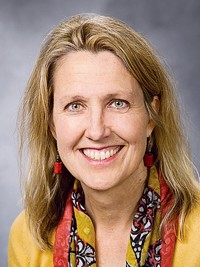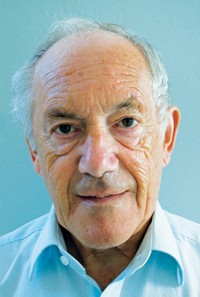Advertisement
Grab your lab coat. Let's get started
Welcome!
Welcome!
Create an account below to get 6 C&EN articles per month, receive newsletters and more - all free.
It seems this is your first time logging in online. Please enter the following information to continue.
As an ACS member you automatically get access to this site. All we need is few more details to create your reading experience.
Not you? Sign in with a different account.
Not you? Sign in with a different account.
ERROR 1
ERROR 1
ERROR 2
ERROR 2
ERROR 2
ERROR 2
ERROR 2
Password and Confirm password must match.
If you have an ACS member number, please enter it here so we can link this account to your membership. (optional)
ERROR 2
ACS values your privacy. By submitting your information, you are gaining access to C&EN and subscribing to our weekly newsletter. We use the information you provide to make your reading experience better, and we will never sell your data to third party members.
Education
Chemistry in the News
Teaching chemistry in the context of news helps students see the real-world implications of science
by STU BORMAN, C&EN WASHINGTON
November 22, 2004
| A version of this story appeared in
Volume 82, Issue 47

University chemistry courses often offer little opportunity to discuss the nexus between science and societal issues. "Yet it is the complexity that comes from these connections that brings the subject to life, makes students better learners, and provides them with the abilities to become lifelong learners and free citizens in a democratic society," says chemistry professor Rainer E. Glaser of the University of Missouri, Columbia.
That's why Glaser and others have developed college courses that highlight the role of chemistry in current events. "It's a fact-oriented approach that tries to get kids involved in learning about things that are relevant in their lives," says chemistry professor David N. Harpp of McGill University, Montreal, who has been involved in these efforts for decades.
An example of such a news-related course is "Chemistry, Biology, and Molecular Modeling," developed by chemistry professor James P. Snyder at Emory University, Atlanta. The course is based on science-related issues discussed in mass media publications such as the New York Times and Newsweek and science-focused publications like Science, Nature, Scientific American, and Chemical & Engineering News. The topics involved vary widely, ranging from buckyballs, space molecules, disease, and aging to vanity, bioterrorism, and crime.
In this course, students learn molecular modeling of news-related chemical compounds, using Spartan software for small-molecule modeling and DeepView to visualize and manipulate protein structures. "By the end of the semester, they are capable of examining any chemistry or biology news item and modeling [the molecule] in 3-D," Snyder says. The course has been taught twice at Emory and was recently accepted by a faculty committee for formal inclusion in the curriculum as an elective.
Snyder first thought of teaching news-related chemistry courses in the 1970s, when he began writing a science news sheet to complement the traditional chemistry curriculum at another university. "When I landed at Emory a few years back and found lots of undergraduate students still wondering where chemistry fits into their lives, I figured it was time to bring [such information] to them through the agency of current events and molecular structure," he says. "It's been a ball."
News-related courses help motivate students. For example, Snyder and a postdoc recently lectured on measles news and their own group's discovery of nonpeptidic small molecules that inhibit entry of measles virus into cells (C&EN, Sept. 13, page 30). Snyder recalls that after the lecture a student exclaimed, "Now I understand why I need to learn all those synthetic reactions" in organic chemistry. "So far, it has seemed like simply a huge and unnecessary memorization exercise." Organic chemistry courses are usually seen as drudgery, Snyder notes, and the student's reaction "reflects an awakening to real-life applications of academic textbook science."
Over the past quarter-century or so, Harpp and colleagues at McGill have developed four news-related undergraduate science courses. There's one on food, covering topics such as acrylamides in food and the role of diet in cancer; one on environment, covering issues like the Kyoto protocol, toxic materials, and household chemicals; one on drugs, covering subjects such as stomach, heart, and street drugs and Merck's recent withdrawal of Vioxx; and one on "the diversity of chemistry," which includes a grab-bag of issues, ranging from biotechnology and DNA testing to peer review in scientific publishing.

Harpp's two collaborators on the project are Joseph A. Schwarcz and Ariel Fenster, director and communications director, respectively, of McGill University's Office for Science & Society (OSS; C&EN, Aug. 14, 2000, page 44). Schwarcz also hosts Canadian TV and radio science programs and writes a newspaper column called "The Right Chemistry." Fenster also presents health, environmental, and technology issues and science programs for children on TV and radio. About 15,000 students have taken the group's courses at McGill, for which lectures and visuals are freely accessible at http://cool.mcgill.ca.
At the University of Missouri, Glaser and colleagues have developed Chemistry Is in the News (CIITN), a project designed to connect the content of organic chemistry courses with real-world issues. In CIITN, collaborative groups of students create portfolios consisting of news articles from the popular press with their analysis of the scientific issues. The portfolios are then discussed and peer reviewed (evaluated and graded) by classmates.
Peer review of portfolios initially occurred among students at Missouri. Now, CIITN has been extended to five other universities in the U.S., Europe, and the Middle East, enabling portfolios created by students at one university to be evaluated by students at other schools.
CIITN is entirely Web-based (http://ciitn.missouri.edu). "Therefore, it is continually up-to-date, and it is also entirely transferable and can be implemented wherever Internet access is available," Glaser says. He hopes additional universities will join CIITN and plans to organize a consortium to support the program's long-term continuation. He notes that Missouri assistant professor of advertising Shelly Rodgers recently joined the CIITN team to develop the program's media literacy component.
CIITN is "a fantastic idea in chemical education," says chemistry instructor Susan M. Schelble, who runs the program at the University of Colorado, Denver. "I have been involved for the past seven semesters at various levels of development. I have seen tremendous results."
At the University of Notre Dame, professor of chemistry and biochemistry Bradley D. Smith has developed seminar courses, for about 15 students each, on news-related chemistry. Students find news stories that interest them--such as ozone depletion or the health risks of aspartame--and websites that provide information on these topics. They then organize the information and present it to the class. The presentations include an analysis of the reliability of information provided by different websites.
Among other news-related science efforts, professor of chemistry and biochemistry Penny J. Gilmer of Florida State University has been working with newspapers in the chemistry classroom for several years. News-related biology courses have been developed by researchers such as professor Steve Rissing of the department of evolution, ecology, and organismal biology at Ohio State University. And at Florida Gulf Coast University, Fort Myers, assistant professor of life sciences Nora E. Demers teaches a course on issues in science and technology that's required of all College of Arts & Sciences students. "My goal is that all students, not just science students, become proficient and comfortable with applying science as a way of knowing," Demers says.
Several organizations promote news-related science efforts. For instance, the National Research Council states in its national education standards that science courses "should emphasize understanding natural phenomena and science-related social issues that students encounter in everyday life." The National Science Foundation and the Camille & Henry Dreyfus Foundation have supported Glaser's development of CIITN, as well as other news-related science projects. In return, funding agencies often require rigorous evaluation of the programs.
"This requirement really is a good thing," says education graduate student Kathleen M. Carson, who is doing thesis research in Glaser's group on design and assessment of collaborative activities. "One learns so much from assessments, which are central to instructional design and continual development. The results have also proven useful for persuading skeptical professors that the courses are worthwhile."

OTHER NEWS-RELATED science projects include "Chemistry in Context," an ACS-supported textbook for nonscience majors that presents chemistry in the context of social issues such as global warming, alternative energy, and nutrition. Traditional chemistry textbooks often include sidebars on the chemistry angle of societal issues. Also, the New York Times offers lesson plans based on its news stories (http://www.nytimes.com/learning/teachers/lessons/unithome.html).
A key distinction between such published resources and the type of news-related chemistry courses developed by Snyder, Harpp, Glaser, and others is that the courses are more interactive: Students must research and write news-centered science reports themselves, rather than simply absorbing information passively. "You don't make advancements with facts," Glaser says. "You only make advancements with insight. The real payoff is the satisfaction you get when you understand something on more than one level."






Join the conversation
Contact the reporter
Submit a Letter to the Editor for publication
Engage with us on Twitter